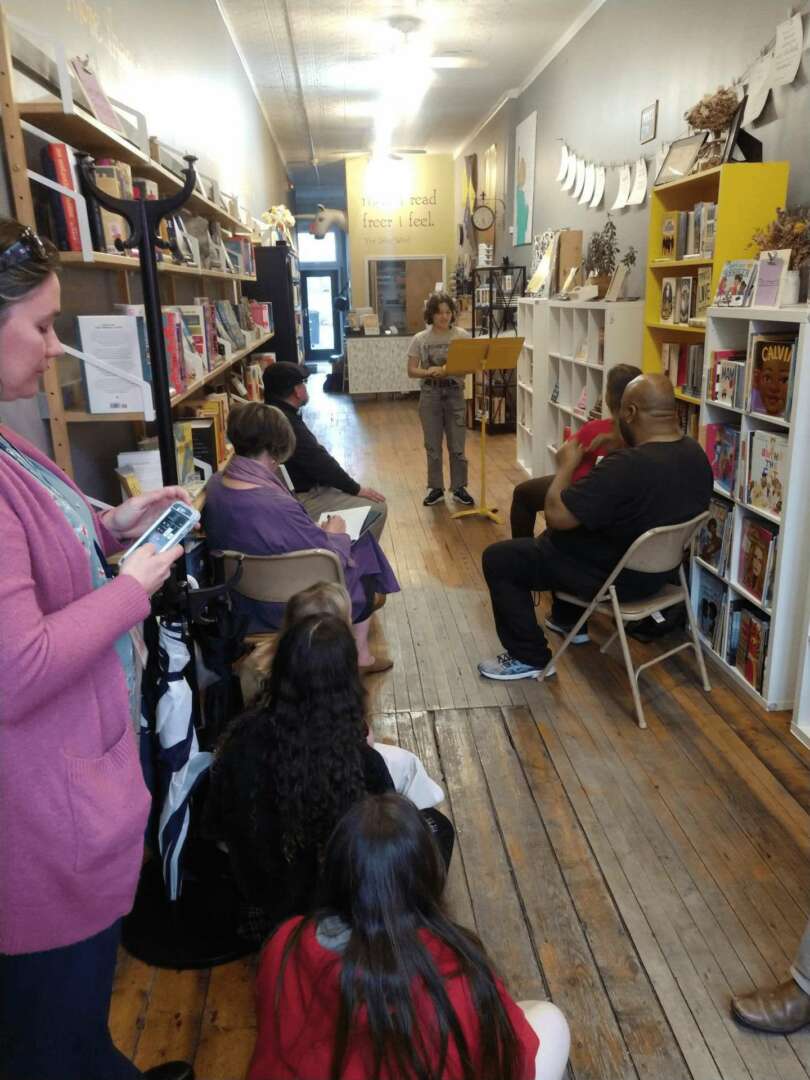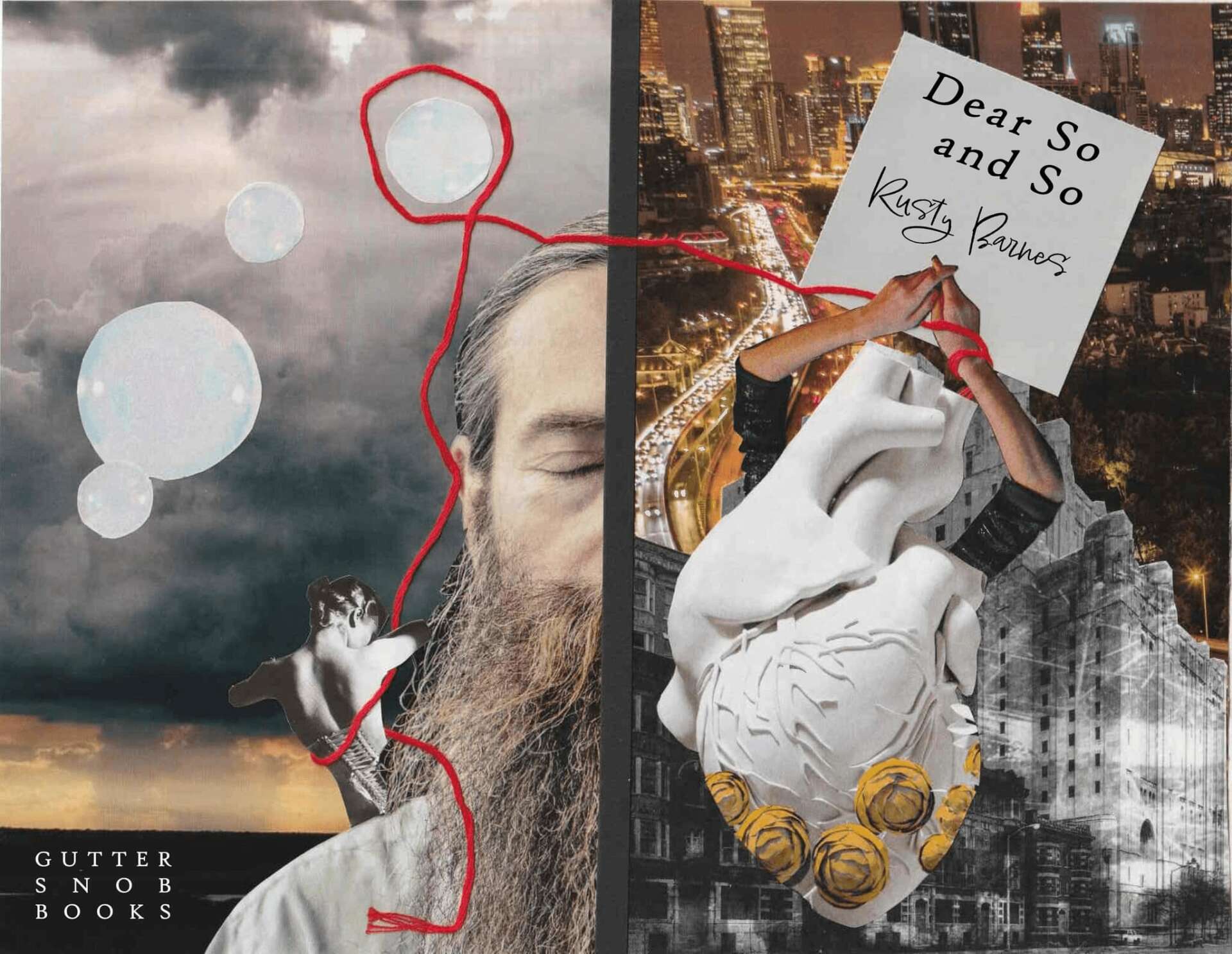Alright – so today we’ve got the honor of introducing you to Aleathia Drehmer. We think you’ll enjoy our conversation, we’ve shared it below.
Hi Aleathia, thanks for joining us today. Can you talk to us about serving the underserved.
In the mid-2000s, I had created a microzine called Durable Goods, which had a far reach. The writers were invited to submit rather than it being an open call so that I could craft each issue with writers whose work I thought went well together. It was a labor of love at the end and I was folding over 500 copies every two weeks. In the end, I couldn’t keep up with a full-time job and being a single mother.
Enter the pandemic and I was having a conversation with my friend Scot D. Young about the poetry class he was teaching in rural Missouri. It was a class full of kids who had lived a life of horrible traumas, most of them broken in spirit. He was trying to give them access to expression through poetry. In that same conversation, he has asked if I was ever bringing Durable Goods back. I paused, because I really loved that zine, but I also loved the extra time I had to work on my own art and writing. But by the end of the conversation, we decided to collaborate. I started the zine back up, but this time as Durable Goods: The Missouri Collective and in these new pages would contain the heartbreak, abuse, and struggles of young teens who were never given a chance to know what they wanted out of life.
I wasn’t sure how well this might be received or who might be interested in teen poetry that could make you cry and hug your own kids, but the small press poetry scene delivered an overwhelming response. We had 65 subscribers for the first series with an outpouring of donations from writers to buy the kids poetry books for exposure and to help other writers afford subscriptions. At the end of the school year, the kids put on a zoom poetry reading with a good amount of attendees and at times there wasn’t a dry eye on the screen. The bravery these kids showed by the end of the year made me want to stand with my back a little straighter and think more about the need for everyone’s voice to be heard. Scot and I did one more series the next year as most of the kids were graduating and he was retiring from his position. The poetry got better and some of the kids started having dreams of a life they didn’t think possible. That was Scot’s doing. He really made those kids feel loved and I was so happy to have had a part in it and to share their work.
I am not sure I have a brand, but I work under the idea that nothing gets wasted–not time, materials, energy, or opportunity. People come into our lives to teach us something, even if that time is brief, and as a society, we have to start looking in the cracks and the dark places to understand those that are afraid of the light to show them they can make something wonderful in the world.

Aleathia, love having you share your insights with us. Before we ask you more questions, maybe you can take a moment to introduce yourself to our readers who might have missed our earlier conversations?
I was born to very young parents and we moved around for most of my childhood. I was forever the new kid at school and paired with a hard name to say, this made for rough transitions. But when I was ten years old, I was reunited with my father who I hadn’t seen in over 5 years. One rainy afternoon, I found a shoebox in the closet and it was filled with poems my father had written after he came back from Viet Nam. They were political and socioeconomic. They were filled with wonder. There were love poems to my mother and even a poem about me he wrote the day I was born. I had never looked at the world the way he did and he wasn’t a man who shared his feelings much, but that rainy day, I learned everything about him. I started writing my own poetry then. I was working out what life meant from my eyes.
In college, I entered a few poetry contests on campus and won but never really sent my work out. It was a way for me to understand my own reality at the time and didn’t think that anyone would be interested. In 2006, after I graduated nursing school, I had my first poem published in Zygote in My Coffee. When you see your name in print for the first time, it changes your work in some way. I started to think about writing as a craft to be presented and how my words and experiences might effect someone else. I dug into the small press community and started working at different zines like The Outsider Writers, Full of Crow, and Zygote in My Coffee. I created my own online and print zines: Durable Goods, In Between Altered States, and Regardless of Authority.
What I love about this community is the tangle of roots it is. I met so many amazing writers traveling around the country for poetry readings, both features and open mics, and started to think about how I could change my own writing. I am constantly trying to keep my voice but expand my comfort zone to take on different forms of poetry or work with words in new ways. Over the years I have had chapbooks and books published at hard working presses such as Kendra Steiner Editions, Alternating Current Press, Rank Stranger Press, Gutter Snob Books, Cajun Mutt Press, and Roadside Press. What I loved about each of these publishers was that they always put in the work because they believe in spreading poetry in a time when it feels like a dying art form. Honestly, what I am most proud of in my writing career is learning about myself by interactions with other writers and readers. Knowing these people changes my outlook on life because it allows me to step outside the work and see myself in it.

Is there a particular goal or mission driving your creative journey?
My mission with my art and my writing is to share what I have seen in my time and experience on earth and make a connection with people. I have always said that if I hear back from one person about how my poem or art made them feel, whether good or bad, then my job with that piece was done. I have never strived to be famous from poetry or art. Maybe I don’t think big enough for myself, but being an artist and writer gives me the chance to meet new people and to learn from them.
Currently, I am collaborating with my friend Ana on putting together a shared collection of poetry based on Greek tragedies. We are each writing a long poem and then writing a shorter, sharp poem based on the first poem. I am forever interested how another person’s life experiences shows up in a shared prompt. Ana is very intelligent and philosophical and grew up in Russia and in NYC. Her perspective of the world will be so different from mine having spent a lifetime moving from small town to small town in the US. The beauty will be in reflecting our separate journeys through a shared prompt. I am also doing an art internship with the magnificent Shannah Warwick where I give her my time and work and then she teaches me something I can then incorporate into my own art. For the last few years, I have also been working with Michele McDannold at Roadside Press to produce book covers for the great collections of poetry and prose she is publishing. Having these kinds of working relationships means everything to me.
I suppose in life what drives me most is the human condition and collaboration. It makes me what to be a part something that looks at everyone’s voice no matter how challenging that might feel to me. The challenge is where I learn best.

Do you think there is something that non-creatives might struggle to understand about your journey as a creative? Maybe you can shed some light?
I think non-creatives might not struggle with my poetry very much. It is relatable since it deals with topics like love, loss, and philosophical questions about why we exist in the world at all. Some say there might be too much nature in it, but I blame Mary Oliver for that. My art on the other hand is where I let the other hidden side of me start to go free. There is a lot of hidden experience in my art which is mainly 3D assemblage and fabric based work. Currently, I have pieces I am working on about being on the spectrum, about miscarriages, about being used in friendships, about how we lose connection with each other. These themes won’t be readily available to see on the onset of visualizing the pieces. They will have look longer and deeper to find the meaning in them. I love a good puzzle and I love challenging the ideas of art. Most of my work is from reclaimed materials, found objects, broken objects, and incorporated with skills I am learning from other artists by taking their free classes at Community Arts of Elmira or doing internships.
Most of my life I have been quiet about what I want or need in my life. I have let others dictate my outcomes and even the direction my writing or art goes in. These days my art is a reflection of all those emotions I was never able to speak about. Some of them are very challenging and deeply painful, so I think non-creatives might have to look a little harder to understand the work.
Contact Info:
- Website: https://www.aleathiadrehmer.com
- Instagram: @aleathiad
- Facebook: https://facebook.com/aleathiadrehmer27
- Twitter: @AleathiaD
- Youtube: @aleathiadrehmer3045
- Soundcloud: https://soundcloud.com/aleathia-drehmer-64605220




Image Credits
All photographs by Aleathia Drehmer except one of me holding my book in the book story. This was taken by Bethany Hammond.


